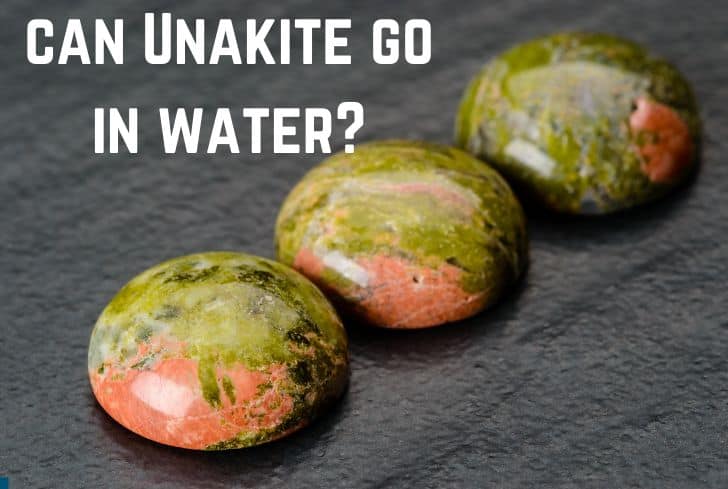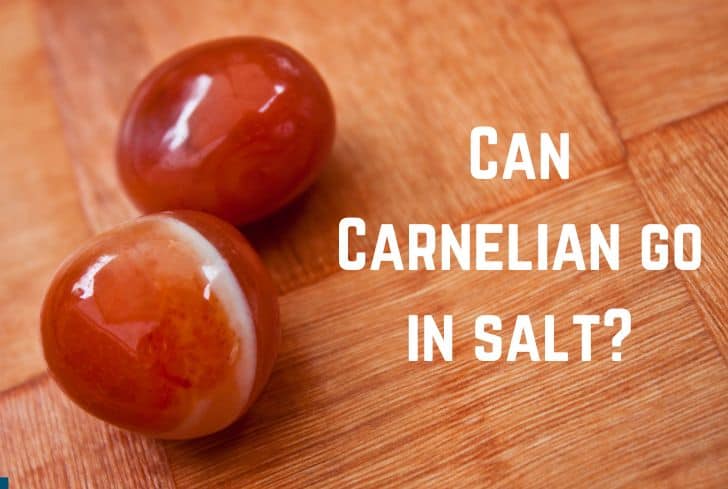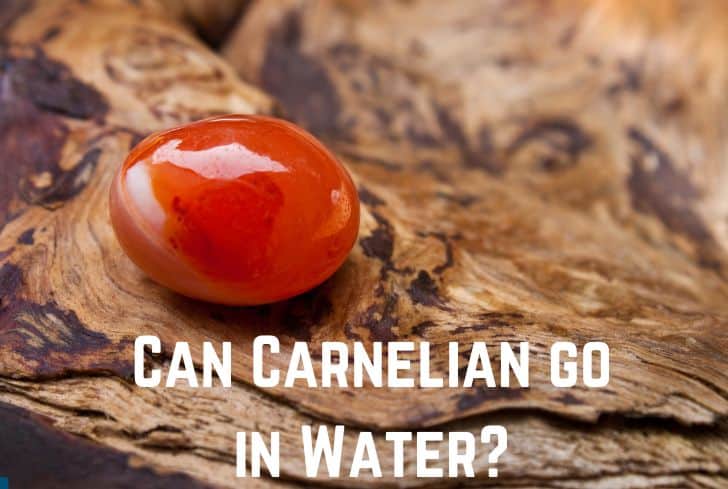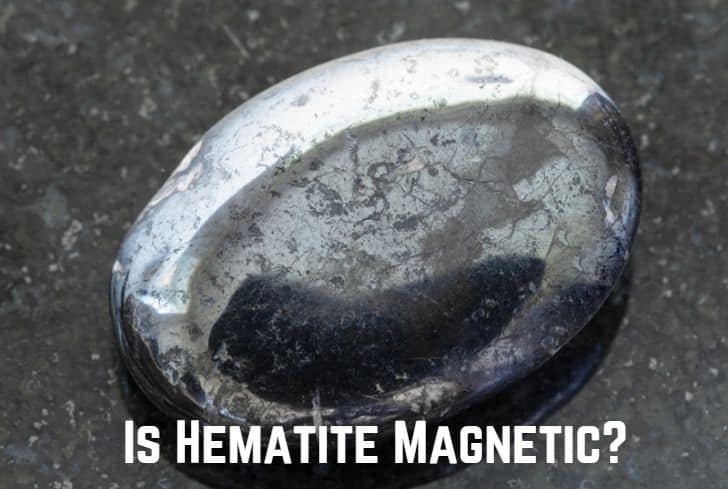Carnelian vs Red Jasper (Full Comparison)
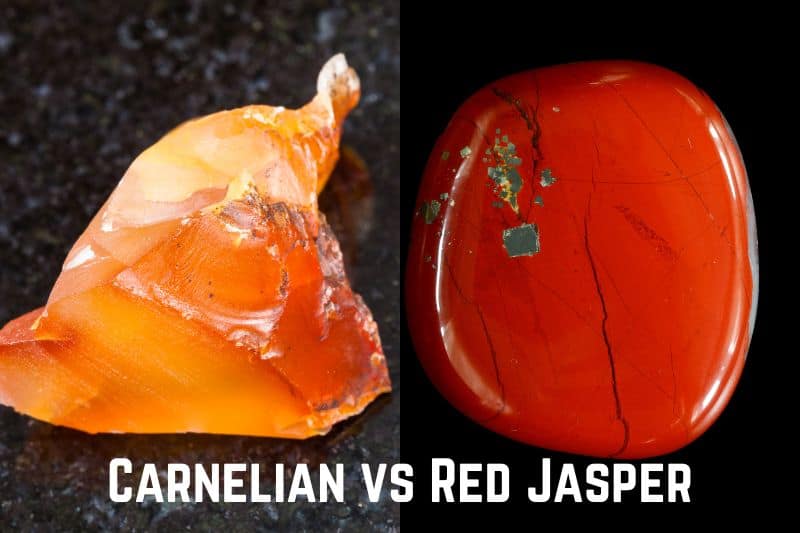
Carnelian and Red Jasper are both red stones that are popularly used in jewelry, decoration, and metaphysical applications. Both stones are made up of chalcedony (a cryptocrystalline form of silica) and possess many similar properties.
However, they also differ from each other in many ways. In this article, we are going to talk about both the similarities and differences between carnelian and red jasper, discussing various features like composition, pattern, pricing, etc. We will also look at their uses and how to take care of them.
Read: Agate vs Geode (Differences & Similarities)
What is Carnelian?
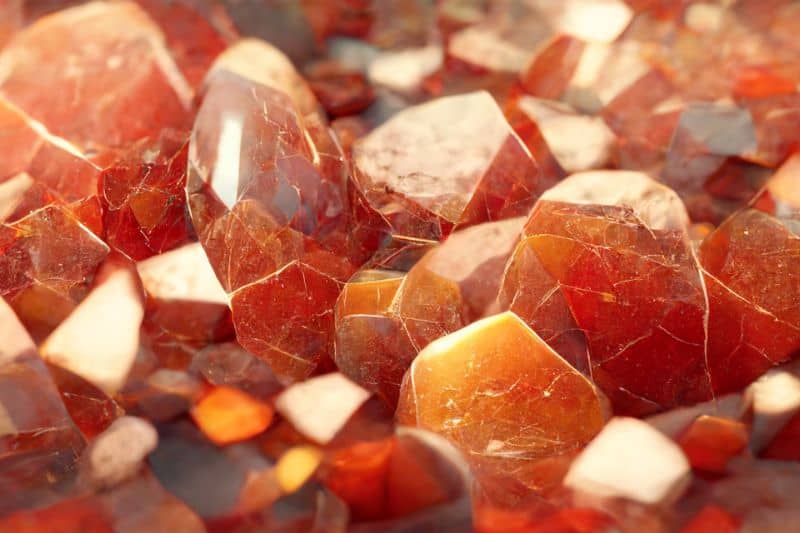
Carnelian is a reddish-orange to brownish-red variety of chalcedony, which is a mineral in the quartz family. It is a translucent to opaque stone that is often used as a semi-precious gemstone in jewelry making.
Carnelian is composed mainly of silicon dioxide and is found in several countries worldwide, including Brazil, India, and Madagascar.
It is believed by some to have healing properties and is used in crystal healing practices. Carnelian has been used for thousands of years in jewelry making and was highly valued in ancient Egypt, Greece, and Rome.
What is Red Jasper?
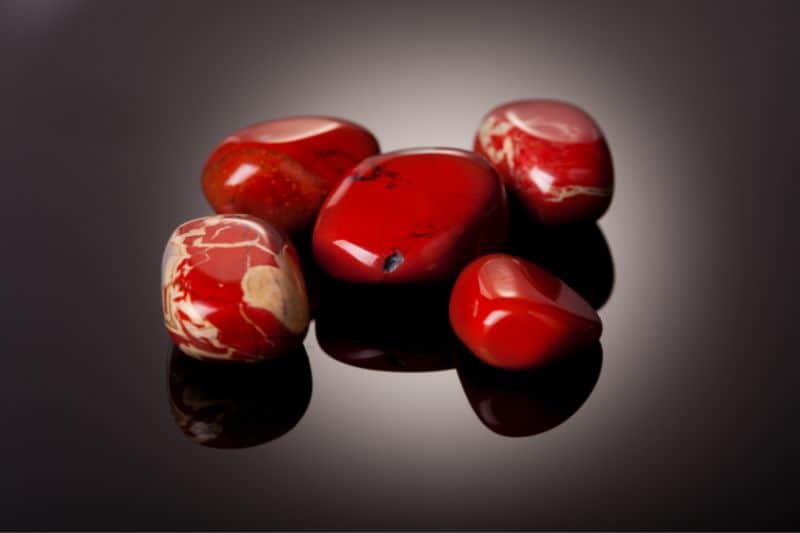
Red jasper is a reddish-brown variety of chalcedony, a mineral in the quartz family. It is an opaque stone that is often used as a semi-precious gemstone in jewelry making. Red jasper is composed mainly of silicon dioxide and is found in several countries worldwide, including Brazil, India, and the United States.
It is believed by some to have healing properties and is used in crystal healing practices. Red jasper has been used for thousands of years in jewelry making and was highly valued in ancient Egypt, Greece, and Rome. It is also used as a decorative stone and for carving.
Similarities Between Carnelian and Red Jasper
Both carnelian and red jasper are formed in similar ways, which is why many of their features are quite similar.
Both Carnelian and Red Jasper are members of chalcedony, which is a cryptocrystalline form of silica; it is made up of very fine intergrowths of quartz and moganite. Chalcedony has the chemical formula of SiO2 (silicon dioxide).
Besides composition, carnelian and red jasper also have a similar appearance. They are usually red, and although their shades can vary significantly, both are known for their earthly red appearance.
Moreover, both carnelian and red jasper have a hardness of 6.5 to 7 on the Mohs Hardness Scale. This means that they are quite durable and can withstand everyday wear & tear; this is why they are used for jewelry and decorative purposes.
Both carnelian and red jasper have a vitreous luster when polished. This means they have a glass-like surface, giving them a smooth and shiny look. Finally, both these stones historically have been associated with spiritual values.
However, Carnelian and Red Jasper differ in many ways despite these similarities. Let us look at their differences below.
Differences Between Carnelian and Red Jasper
Chemical Composition
Carnelian and Red Jasper are both types of chalcedony, which is a form of microcrystalline quartz, and because of this, they share many similar characteristics. However, the differences in their impurities also create distinctions between them.
Silicon Dioxide (SiO2) is the primary component of both Carnelian and Red Jasper. They are formed when magma reaches up to the Earth’s crust and cools down. Gas bubbles form and later escape during the cooling process, leaving spaces inside rocks.
Later, these empty pockets get filled with fluids, such as silica. As the concentration of SiO2 increases, the molecules bond together to form crystals, and these eventually grow to create the microcrystalline structure of chalcedony.
However, Carnelian and Red Jasper acquire different impurities during their crystallization process, which accounts for their different colors. In the case of Carnelian, iron oxide impurities, (particularly hematite) give it its orange to reddish color.
On the other hand, Jasper gets not only iron oxide but also ash impurities. This gives Jasper its distinctive speckled appearance. Other elements such as hematite, goethite, and other iron-rich compounds can also be present as impurities that shape its look.
Finally, the geographic conditions under which chalcedony is formed affect the two stones. Pressure and temperature are two determinants, and they play a big role in the creation of the stones.
Color
Carnelian and Red Jasper both have a reddish appearance, but there are subtle differences in their shades.
Carnelian has a warm reddish-orange to orange color. This is mainly due to the presence of iron oxides, particularly hematite. These iron oxide impurities absorb certain wavelengths of light and contribute to the orange-reddish hues, ultimately giving Carnelian its distinctive color.
Some Carnelian stones have slight hints of brown, yellow, or even pink. As with all stones, the intensity of the color can also vary, from vibrant to being more muted.
On the other hand, Red Jasper has a much more intense red color, as the name suggests. Here also, the color is due to the presence of iron oxide impurities. In addition, Red Jasper also includes ash particles, which contribute to its speckled appearance.
Red Jasper can vary from dark brick red to a rich maroon in the red spectrum. Various impurities like hematite and goethite can also create beautiful variations and patterns in the stone (such as bands, swirls, etc.). This adds to the beauty of the stone, making it more valuable.
Size
Both Carnelian and Red Jasper can be found in a wide range of sizes: from small crystals to large formations.
Carnelian is used in all kinds of sizes, from small tumbled stones used in jewelry to larger decorative carvings. Due to its uniform color and smooth texture, it is often used in intricate gemstone carvings, cameos, and beads.
Red Jasper is generally used for larger carvings and decorative objects. Because the stone displays unique patterns, it is usually best to use it in large pieces so that they can appear beautifully. These include large cabochons, sculptures, and other artistic pieces.
Hardness
Both Carnelian and Red Jasper have a value of around 6 to 7 on the Mohs Hardness Scale.
Mohs Hardness Scale is a relative measure of a mineral’s resistance to scratching. Besides that, it also indicates a mineral’s relationship to water. Usually, a value over 5.0 means that the stone is safe to go in the water.
Carnelian has a value of 7 on the Mohs Hardness Scale. Red Jasper also has a similar value of about 6.5 to 7. It means that both stones are quite durable and can withstand everyday wear & tear; this is why they are good for jewelry and decorative pieces.
However, they can still get scratched by harder stones like corundum. Additionally, there are minor differences between the two. Carnelian is more resilient, stable, and porous (likely to absorb moisture).
On the other hand, Red Jasper is impermeable, making it harder to work with.
Finally, the two also have different types of fracture. Carnelian has an uneven fracture, meaning that it leaves an irregular surface when it breaks. In contrast, Red Jasper has a unique conchoidal fracture. So, if we break the stone, we will see smooth, curved lines.
Pattern and Clarity
A key distinguishing factor between the two stones is their opacity.
Carnelian can range from highly translucent to semi-opaque. In contrast, red jasper is a completely opaque stone. Moreover, red jasper also has beautiful patterns on its surface (such as bands or swirls) due to the presence of ash impurities.
These patterns increase the stone’s value as they make it more beautiful. Carnelian may also have spots due to inclusions, but these usually decrease the stone’s value.
Both stones have a similar vitreous luster, so they look like smooth and shiny glass.
Location
Both stones are found all over the world.
Carnelian is mostly found in Germany, Brazil, Slovakia, and Egypt.
On the other hand, Red Jasper is found in Canada, Russia, Egypt, and Madagascar.
Pricing
Since both Carnelian and Red Jasper are widely found throughout the world, they are quite inexpensive.
The prices of the stones depend on their color, clarity, size, and cut. Carnelian is usually the least expensive variety of chalcedony. Its price can start from as low as $2 per carat.
In the case of Red Jasper, you can find commercial-quality cut pieces in simple shapes for below $5 at local rock shops. Designer forms & fine materials can raise the price slightly. Moreover, rare varieties like Imperial Jasper and Madagascar Jasper command premium prices.
Zodiac Sign
Carnelian and Red Jasper are associated with different spiritual values.
Although not a birthstone, Carnelian is usually associated with July, and thus with Cancers and Leos who are born in that month. It is believed to give courage to people to pursue dreams, stay motivated, and embrace changes.
Red Jasper is again not a birthstone but is associated with October. Therefore, Libras and Scorpios resonate with it. The stone is believed to bring strength, endurance, and protection. It is also said to promote stability & balance in life.
Care
Both Carnelian and Red Jasper have a value of 6.5-7 on the Mohs Hardness Scale. Since this is above the minimum value (5.0) required for minerals to survive underwater, they are safe underwater. Follow these steps to clean them:
- Take a mild dish detergent and mix it with water.
- Immerse the stone in the solution for a few minutes. Use a soft scrub to clean inside the crevices.
- Take the stone out of the solution and rinse it under running water, ensuring that any excess soap is removed.
- Let the stone air dry. Ensure you turn the stone a few times before drying to remove any water from the crevices.
However, the stones should still not be immersed in water for too long as it can make them dull or damage their structure. Apart from cleaning, you can also recharge the stones through various methods like sound cleansing, selenite charging, etc.
Read: Aventurine vs Amazonite (Full Comparison Guide)
Uses of Carnelian and Red Jasper
These are the uses of Carnelian and Red Jasper
- Jewelry: Given their beautiful appearance and considerable durability, both stones are widely used in jewelry.
- Lapidary & Decorative Objects: They are also used for lapidary items such as cabochons, sculptures, and carvings. Larger decorative items such as bookends and figurines can also be made out of them.
- Spiritual Practices: Both stones are also valued for their metaphysical properties, such as bringing courage and endurance.
Conclusion
Both Carnelian and Red Jasper have a similar reddish appearance. Since both are types of chalcedony, they have many similar properties, such as hardness, luster, etc. However, variations in impurities lead to many differences too, such as in their opacity.



